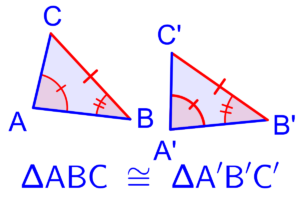
How often to fertilize your lawn is a crucial consideration in maintaining a lush, healthy turf that enhances the beauty of your landscape. Fertilization serves as a cornerstone of lawn care, providing essential nutrients that promote vigorous growth and resilience against environmental stressors. However, determining the optimal frequency of fertilization requires careful consideration of various factors, including grass type, soil condition, climate, and specific lawn characteristics. In this article, we explore the intricacies of fertilization frequency, offering insights into general guidelines, specific considerations for different lawn types, and advanced techniques for sustainable lawn care practices to get how often to fertilize your lawn.
Factors Influencing Fertilization Frequency
The frequency of lawn fertilization is influenced by several key factors that dictate the grass’s nutrient requirements and growth dynamics.
Grass type and growth rate:
Cool-season and warm-season grasses exhibit distinct growth patterns and nutrient needs, necessitating tailored fertilization schedules. Cool-season grasses, such as Kentucky bluegrass and fescue, experience peak growth in spring and fall and may require more frequent fertilization during these periods. In contrast, warm-season grasses like Bermuda and Zoysia thrive in summer heat and may benefit from more frequent fertilization during the growing season.
Soil condition and nutrient levels:
Assessing soil fertility and pH levels is essential for determining the frequency of fertilization. Soil tests can identify nutrient deficiencies or excesses that may affect grass health and growth. Adjusting the fertilization frequency based on soil test results ensures that the grass receives the necessary nutrients without overapplication, minimizing the risk of nutrient runoff and environmental pollution.
Climate and weather conditions:
Climate and weather patterns play a significant role in nutrient uptake and utilization by the grass. Temperature extremes, precipitation levels, and seasonal variations affect the grass’s metabolic processes and growth rates. Adapting the fertilization schedule to weather patterns ensures that the nutrients are available when the grass needs them most, optimizing growth and health while minimizing waste.
General Guidelines for Fertilization Frequency
Establishing a general fertilization schedule provides a framework for maintaining optimal grass health throughout the year.
Annual fertilization schedule:
Determining the number of fertilizer applications per year depends on factors such as grass type, soil condition, and climate. A typical fertilization schedule may include applications in early spring, late spring, early fall, and late fall, corresponding to the grass’s peak growth periods and nutrient requirements. However, adjustments may be necessary based on specific lawn characteristics and environmental factors.
Signs indicating the need for fertilization:
Visual cues such as yellowing or thinning grass, slow growth, or increased weed infestation may indicate nutrient deficiencies and the need for fertilization. Conducting soil tests and nutrient analysis can provide more precise information about the grass’s nutrient needs and guide the fertilization schedule. Regular monitoring of the lawn’s health allows for timely adjustments to the fertilization frequency, ensuring that the grass receives adequate nutrients to thrive.
Avoiding over-fertilization:
Over-fertilization can have detrimental effects on the environment and the lawn’s health, including nutrient runoff, water pollution, and grass burn. Following recommended fertilization rates and using calibrated equipment can help prevent overapplication and minimize waste. Implementing responsible fertilization practices, such as avoiding fertilizing before heavy rain or watering the lawn after application, reduces the risk of nutrient leaching and environmental harm.
Specific Considerations for Different Lawn Types
Tailoring the fertilization frequency to specific lawn types and conditions ensures optimal grass health and appearance.
High-traffic areas and sports turf:
Areas subject to heavy foot traffic, such as sports fields or play areas, experience increased nutrient demands due to grass wear and compaction. Customizing the fertilization frequency to meet these demands ensures that the grass remains resilient and durable, withstanding the stresses of frequent use. Implementing soil aeration and incorporating organic matter can further enhance nutrient uptake and soil structure, supporting healthy turf growth in high-traffic areas.
Ornamental lawns and landscaping:
Lawns intended for aesthetic purposes, such as ornamental lawns or landscaping features, require special attention to maintain their visual appeal. Soil preparation, including adequate drainage and organic matter content, lays the foundation for healthy turf growth and vibrant color. Fine-tuning the fertilization schedule to coincide with the lawn’s peak growth periods enhances turf density and minimizes weed competition, resulting in a picturesque landscape that enhances curb appeal.
Large-scale and commercial properties:
Large-scale properties, such as golf courses or commercial landscapes, present unique challenges in lawn maintenance and fertilization. Efficiency, cost-effectiveness, and environmental considerations are paramount in developing a fertilization program tailored.




